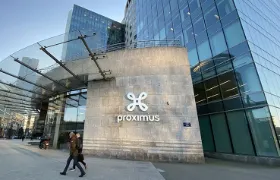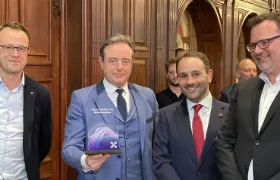Proximus intends to achieve 100% very high-speed internet coverage in rural areas using innovative technologies
With over 97% of households connected to broadband, Belgium ranks among the countries with the best fixed internet coverage in the world. But there is no reason to leave it at that. In order to open/offer the advantages of very high-speed Internet to the entire Belgian population, including in rural areas, Proximus is leveraging new resources every day to get closer to 100% very high-speed internet coverage. By combining fiber with other technologies, Proximus wants to provide all Belgians with optimal access to online services. These have become essential, whether for distance learning, teleworking, entertainment or staying in touch with loved ones.
For several years now, Proximus has been making huge investments to accelerate the fiber roll-out in collaboration with its partners Unifiber in Wallonia, Fiberklaar in Flanders and GOFiber in the German-speaking community. Now the company wants to go one step further. By combining fiber with other innovative technologies, Proximus also aims to improve connectivity in rural areas, particularly in those areas where the connection speed is currently below 30 Mbit/s.
In rural areas where traditional cable laying is too expensive or no option altogether, Proximus is constantly looking for new alternatives to make specific projects possible and economically viable. Various techniques are used based on the typology of the places involved and the nature of the grounds.
Innovative solutions to roll out broadband internet in rural areas
Combination of fiber and radio link
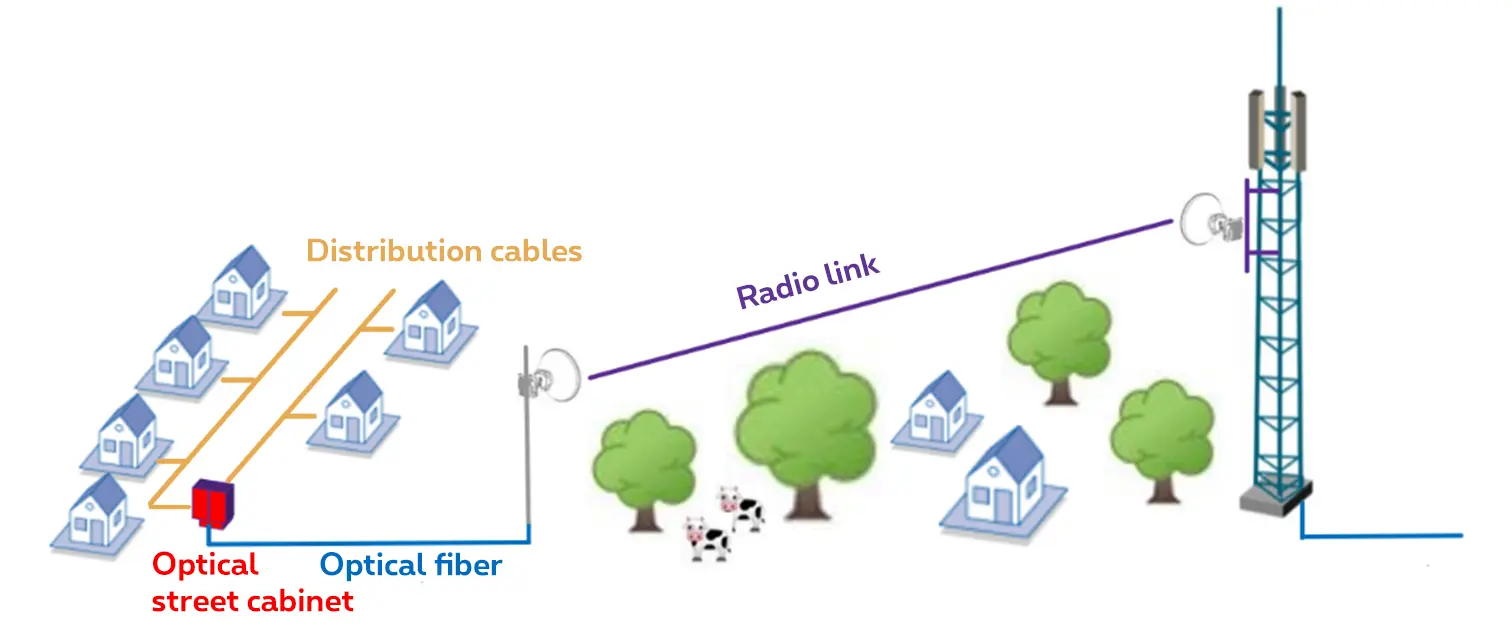
This technique comes down to providing high-speed Internet connectivity by combining fiber and a radio link, also known as a microwave link. Broadband is delivered via two parabolic antennas located several kilometers apart. As shown in the figure opposite, there is no radiation outside the fictitious line connecting the 2 antennas. Technically speaking, this solution is possible if the 2 antennas do not meet any obstacle between them.
This technique has already been used in many rural Belgian municipalities after having been successfully tested in the village of Felenne (Beauraing) at the end of 2018. It has recently been used in the communes of Froidchapelle, Büllingen, Estinnes, Flobecq, Ichtegem, as well as in the villages of Cielle and Halleux in the commune of La Roche-en-Ardenne, and Gênes in the commune of Rendeux.
In these last 3 villages, nearly 300 houses have seen their connection speed multiplied by 10 (from less than 10 Mbps to 50-100 Mbps).
Aerial fiber installation
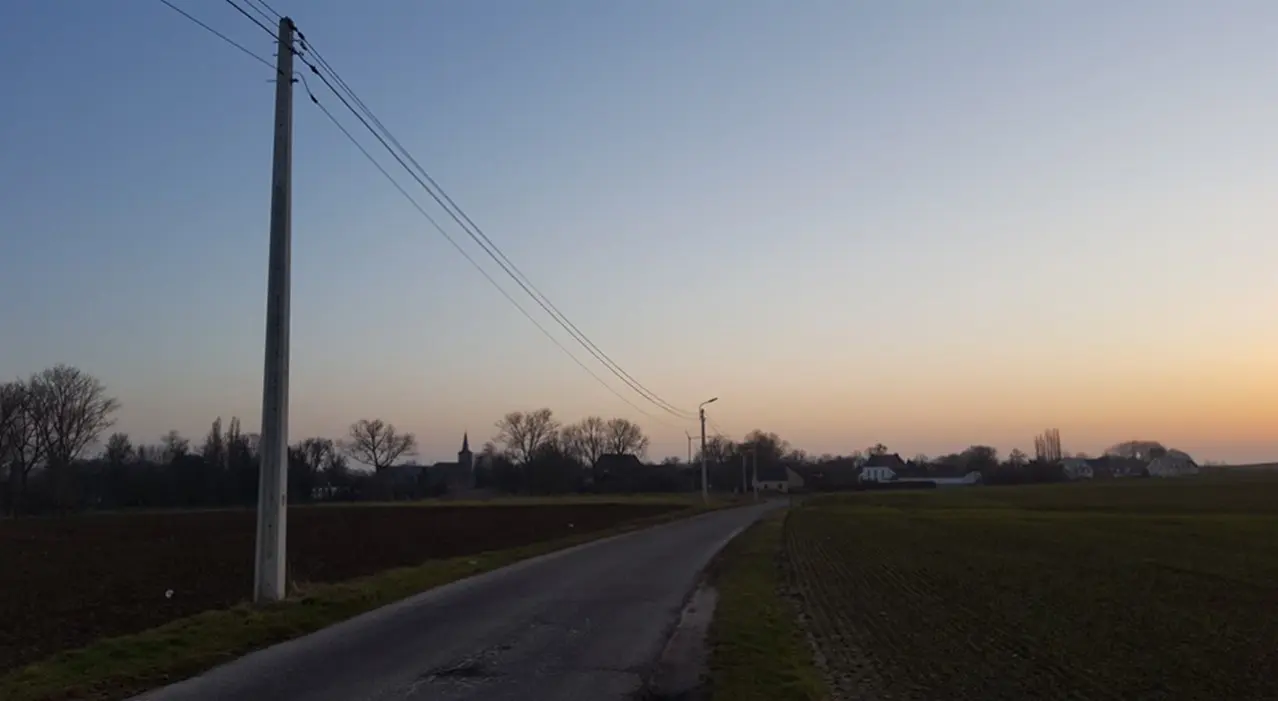
In this case, the fiber is laid on the pylons of the electricity suppliers, which reduces costs compared to cables running in conventional trenches. This solution can only be applied in areas where electricity pylons are present and where the network operator has agreed to it.
In January 2022, Proximus signed an agreement with ORES to use its electricity pylons in Wallonia to connect homes to the fiber. Discussions are currently held with Resa and Fluvius to reach a similar agreement in Flanders.
This technique has been used in many municipalities, the most recent being Gouvy, Houffalize, Philippeville, Gesves and Rendeux. Projects are currently underway in the municipalities of Sivry-Rance, Stoumont, Houyet, Heron and Ohey.
Optimized trenches
Here, Proximus uses machines that perform all the necessary operations in one go (opening the trench, laying the optical ducts and closing the trench). Trenches don't need to be as wide either. These 2 elements allow to limit the costs. This innovative technique can only be used under certain conditions, namely when there is no conflict with an existing infrastructure in the ground. It is currently being tested in Gouvy and Onhaye.
Partnerships with municipalities
In some cases, Proximus carries out these works in partnership with the municipality in which the white zone is located. The municipality therefore makes available to interested parties the trenches necessary for the laying of fiber. This solution therefore makes it possible to reduce costs and make economically viable roll-out projects that would not have been possible if Proximus had to resort entirely to its own funds.
By the end of 2020, there were nearly 46,500 homes in white zones, most of which were located in Wallonia. In 2021 and 2022, Proximus rolled out more than 160 optical street cabinets in Wallonia, enabling 14,000 families and SMEs, mainly located in rural areas, to access broadband Internet connectivity. And it is planned to deploy 180 projects in the next 3 years.
Pilot projects to go even further
With the support of the advanced connectivity market of the Giga Région program of the Agence du numérique
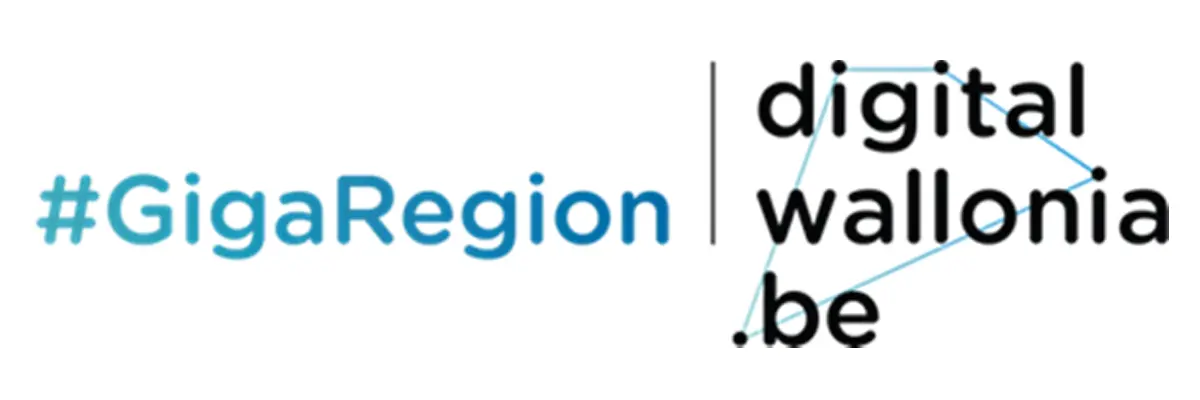

Proximus' research and development departments are constantly looking for solutions to roll out broadband in rural areas. In this context, 3 new projects have recently received subsidies from the Walloon Region to be tested.
Roll out of a fiber network connected via radio link
In the municipality of Onhaye, a project combines a radio link with a fiber roll out program (Fiber to the Home - FTTH). Each of the 88 homes and businesses in the village of Miavoye (municipality of Onhaye) is directly connected to fiber. This solution provides Proximus customers with a download speed of 1 Gbit/s and from this summer of the 10 Gbit/s technology.
Micro-trenching
In the municipality of Gouvy, Proximus is rolling out fiber to the home using a combination of micro-trenching and aerial fiber installation. This rollout will benefit 206 homes and 27 business units (self-employed, shops, etc.) in the villages of Baclain and Steinbach, which will also be able to benefit from a download speed of 1 Gbit/s and, as of summer 2023, from 10 Gbit/s technology.

